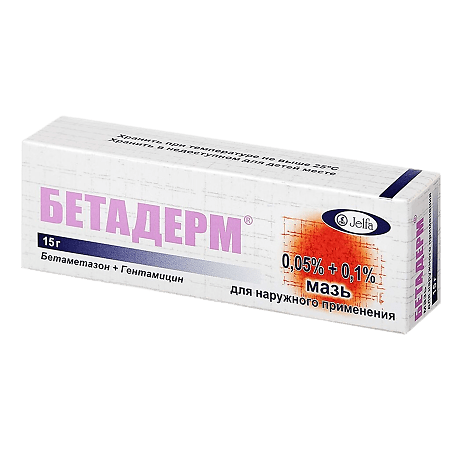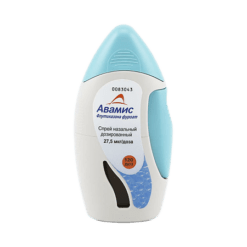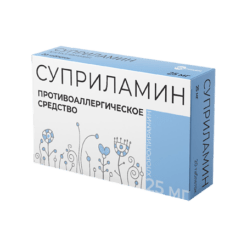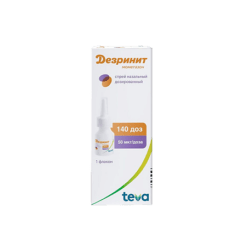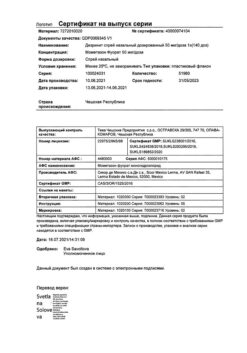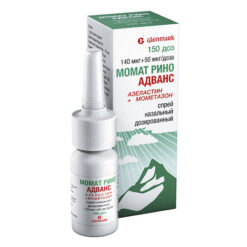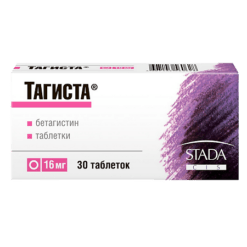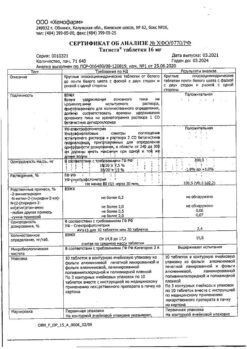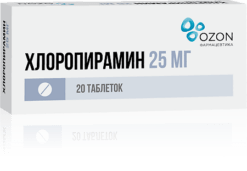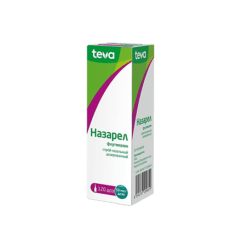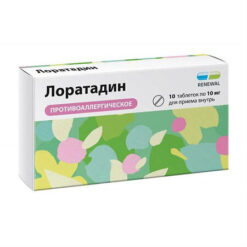No products in the cart.
Betaderm, 0.05%+0.1% ointment 15 g
€10.71 €9.37
Description
A combined preparation for external use. The properties of Betaderm are due to the combined action of betamethasone dipropionate and gentamicin sulfate.
Betamethasone dipropionate is a synthetic hydrocortisone derivative containing fluorine. It has a pronounced anti-inflammatory, antipruritic, anti-allergic and vasoconstrictor effect. It reduces inflammation due to lower production of prostaglandins and leukotrienes, which leads to inhibition of phospholipase A2 activity and reduction of arachidonic acid release from phospholipids of cell membranes. It has anti-allergic effect by inhibiting local allergic reactions. Due to the local vasoconstrictor action it reduces the exudative reactions. It reduces protein synthesis, collagen deposition, accelerates biotransformation of proteins in the skin and inhibits proliferative processes.
Gentamicin sulfate is a broad-spectrum antibiotic of the aminoglycoside group. Bactericidal activity is caused by disruption of structure and function of cytoplasmic membrane, disruption of RNA synthesis at 30S ribosomal subunit level. Active against Gram-positive bacteria: Streptococcus spp. (sensitive strains of beta- and alpha-hemolytic Streptococcus group A), Staphylococcus spp. (coagulase-positive, coagulase-negative and some penicillinase-producing strains); against Gram-negative bacteria: Escherichia coli, Proteus spp, Pseudomonas aeruginosa, Klebsiella spp., Enterobacter spp., Serratia spp., Citrobacter spp., Salmonella spp., Shigella spp.
Pharmacokinetics
Absorption
Betamethasone dipropionate is a lipophilic substance and is easily absorbed through the stratum corneum without biotransformation. Absorption is increased when applied to the skin in body folds, on skin with damaged epidermis or in areas of inflammation, when using the product frequently or after application over a large area of skin. Absorption of betamethasone dipropionate through the skin in children is faster than in adults.
Gentamicin sulfate is not absorbed after application to intact skin. When used on the affected skin it may be absorbed into the bloodstream.
Metabolism and excretion
Betamethasone dipropionate is biotransformed mainly in the liver. As compounds with glucuronic acid and in small amounts unchanged it is excreted mainly in the urine and in smaller amounts in the bile.
Gentamicin sulfate is not biotransformed in the body and is excreted unchanged in the urine.
Indications
Indications
dry inflammatory skin conditions (dermatoses);
allergic dermatoses, complicated by secondary bacterial infection and occurring with severe keratosis, itching or severe allergic reactions;
atopic dermatitis;
seborrheic dermatitis;
simple chronic lichen;
horny eczema;
psoriasis;
allergic contact dermatitis;
cutaneous lupus erythematosus;
polymorphic erythema.
Pharmacological effect
Pharmacological effect
Combined preparation for external use. The properties of the drug Betaderm are due to the combined action of betamethasone dipropionate and gentamicin sulfate.
Betamethasone dipropionate is a synthetic fluorine-containing derivative of hydrocortisone. It has a pronounced anti-inflammatory, antipruritic, antiallergic and vasoconstrictive effect. Reduces the inflammatory process by reducing the production of prostaglandins and leukotrienes, which leads to inhibition of phospholipase A2 activity and a decrease in the release of arachidonic acid from cell membrane phospholipids. It has an antiallergic effect by suppressing local allergic reactions. Due to the local vasoconstrictive effect, it reduces exudative reactions. Reduces protein synthesis, collagen deposition, accelerates the biotransformation of proteins in the skin and inhibits proliferative processes.
Gentamicin sulfate is a broad-spectrum antibiotic from the group of aminoglycosides. The bactericidal effect is due to disruption of the structure and function of the cytoplasmic membrane, disruption of RNA synthesis at the level of the 30S ribosomal subunit. Active against gram-positive bacteria: Streptococcus spp. (susceptible strains of group A beta- and alpha-hemolytic streptococcus), Staphylococcus spp. (coagulase-positive, coagulase-negative and some penicillinase-producing strains); against gram-negative bacteria: Escherichia coli, Proteus spp., Pseudomonas aeruginosa, Klebsiella spp., Enterobacter spp., Serratia spp., Citrobacter spp., Salmonella spp., Shigella spp.
Pharmacokinetics
Suction
Betamethasone dipropionate is a lipophilic substance and is easily absorbed through the stratum corneum of the skin without undergoing biotransformation. Absorption increases when applied to skin in the area of body folds, to skin with damaged epidermis or to areas of inflammation, with frequent use of the drug or after application to a large surface of the skin. Absorption of betamethasone dipropionate through the skin is faster in children than in adults.
Gentamicin sulfate is not absorbed after application to intact skin. When applied to affected skin, it can be absorbed into the bloodstream.
Metabolism and excretion
Betamethasone dipropionate is biotransformed mainly in the liver. In the form of compounds with glucuronic acid and in small quantities unchanged, it is excreted mainly in the urine and in smaller quantities in bile.
Gentamicin sulfate is not biotransformed in the body and is excreted unchanged in the urine.
Special instructions
Special instructions
Considering the presence of a potent corticosteroid in the composition of the drug, the drug must be used in the acute period of the disease, for a short time, on a small surface of the skin.
Long-term use of the drug should be avoided, because at the same time, the frequency of side effects increases and the development of bacterial resistance to gentamicin sulfate is possible.
If the infection in the area where the drug is applied is activated, additional antimicrobial or antifungal treatment must be prescribed. If symptoms of infection do not go away, you must stop using the drug until the infection is completely cured.
The drug should not be used on the skin of the face due to the possibility of telangiectasia and perioral dermatitis. On the skin in the axillary and groin area, the drug should be used only in cases of extreme necessity.
The drug should not be used under an occlusive dressing, because this can lead to atrophy of the epidermis, the appearance of stretch marks, and the development of superinfection.
It should be used with caution in cases of subcutaneous tissue atrophy, especially in the elderly.
Impact on the ability to drive vehicles and operate machinery
The drug does not limit psychophysical performance, the ability to drive vehicles and maintain moving mechanisms.
Active ingredient
Active ingredient
Betamethasone, Gentamicin
Composition
Composition
1 g of ointment for external use contains:
active ingredients:
betamethasone (in the form of dipropionate) 500 mcg,
gentamicin (in the form of sulfate) 1 mg,
excipients:
liquid paraffin,
lanolin alcohol,
cetostearyl alcohol,
butylated hydroxytoluene,
butylated hydroxyanisole,
Vaseline white.
Pregnancy
Pregnancy
The drug is contraindicated for use during pregnancy and lactation (breastfeeding).
Contraindications
Contraindications
hypersensitivity to the components of the drug;
viral and fungal skin infections;
skin manifestations of syphilis;
lupus;
rosacea and acne acne;
phlebitis and trophic ulcers;
vaccination period and skin post-vaccination reactions;
children under 2 years of age;
pregnancy;
lactation period.
With caution: with atrophy of subcutaneous tissue in elderly people.
Side Effects
Side Effects
Local reactions: acne, steroid purpura, inhibition of epidermal growth, subcutaneous tissue atrophy, dryness, depigmentation or hyperpigmentation of the skin, skin atrophy and striae, telangiectasia, folliculitis; When used on the face, the drug may cause perioral dermatitis.
Allergic reactions: rarely – urticaria, maculopapular rash.
From the endocrine system: after a single use of 7 g of ointment, a reversible decrease in ACTH production in the pituitary gland is possible due to inhibition of the pituitary-adrenal system.
From the cardiovascular system: edema, arterial hypertension (with prolonged use).
From the senses: when used on the skin of the eyelids – glaucoma or accelerated development of cataracts; when applying the drug to mucous membranes or a significant surface of the skin (especially damaged by a pathological process), ototoxicity is possible.
Other: decrease in the general resistance of the body.
Interaction
Interaction
During treatment, you should not vaccinate against smallpox, as well as other types of immunization, due to possible disturbances of the immune response.
Strengthens the effect of immunosuppressants, reduces the effect of immunostimulating drugs.
Overdose
Overdose
Symptoms: after prolonged use on a large surface of the skin, a decrease in the body’s resistance, arterial hypertension, edema, and symptoms of Cushing’s disease are possible.
Symptoms of overdose disappear after discontinuation of the drug.
Storage conditions
Storage conditions
The drug should be stored out of the reach of children, at a temperature not exceeding 25°C. Do not freeze.
Shelf life
Shelf life
3 years.
Manufacturer
Manufacturer
Pharmaceutical plant Elfa A.O., Poland
Additional information
| Shelf life | 3 years. |
|---|---|
| Conditions of storage | The drug should be kept out of reach of children, at a temperature not exceeding 25 ° C. Do not freeze. |
| Manufacturer | Jelfa Pharmzavod, Poland |
| Medication form | topical ointment |
| Brand | Jelfa Pharmzavod |
Related products
Buy Betaderm, 0.05%+0.1% ointment 15 g with delivery to USA, UK, Europe and over 120 other countries.

